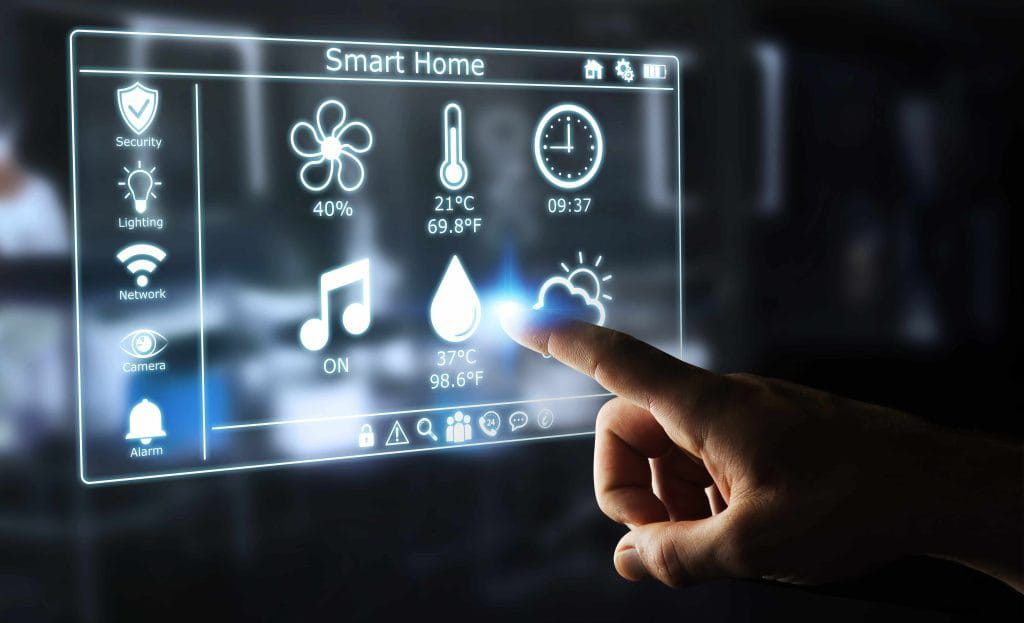The energy consumption optimization, especially regarding heating, is easier to achieve thanks to the latest generation devices that regulate indoor temperature. The WiFi thermostat is a clear example of such efficiency. Let's find out what it is, how it works, and how it helps save on energy consumption and expenses.
How does a WiFi thermostat work?
The thermostat is the tool that allows you to manage the energy consumption of the heating system and regulate the home temperature. Connected to the boiler or individual radiators, it controls the heating generator's activation and deactivation.
In winter, when the temperature is set between 64.4° F and 68° F - an interval that provides the so-called thermal comfort during the cold season -, the thermostat directly manages the heat output.
- Heat is activated if the recorded temperature is lower than the level set by the user.
- The heat output is interrupted when the preset temperature level is reached.
Technological advancements have led to the development of the WiFi thermostat, a much more efficient and precise tool than traditional, often manual versions. Through connection to the home WiFi system, this new class of thermostats can be programmed remotely, interacting with the mobile app and voice commands from a virtual assistant like Google Home or Alexa.
The WiFi or smart thermostat is an essential component in home automation applied to heating, along with intelligent thermostatic valves used to regulate individual radiators.
How to choose a smart thermostat
A WiFi thermostat with excellent performance combines remote programming with other functions that are particularly useful for optimising heating consumption and costs. For this reason, when evaluating which smart thermostat to choose, it is important to consider the equipment it is equipped with.
- The most efficient models are designed with algorithms to learn the hourly, daily, and weekly habits of the household occupants. The thermostat is thus able to autonomously manage the activation or deactivation of heating.
- Immediate remote intervention to modify default settings is an aspect that characterises the management of the WiFi thermostat. There are devices that, in addition, detect whether the user is returning home or not by utilising the phone's geolocation systems and initiate heat output.
- High-end WiFi thermostats detect the air quality in the home, measuring humidity levels: with this assistance, it is easier to avoid environments that are too dry or too humid.
- Another aspect that distinguishes an effective thermostat is its precision in providing data and information on consumption: the user can understand how to improve energy efficiency and contain heating costs.

How much is a WiFi thermostat?
The price of a smart thermostat that incorporates all the functionalities for complete control and monitoring of the heating system is around 130 pounds.
For proper installation, it is necessary to pair a connection unit to be connected to the home WiFi router: at this point, the device is connected to the line and can be managed remotely or with the commands of Home Assistants like Alexa or Google Home.
The complete kit involves an expense of almost 215 pounds.
The WiFi thermostat, like any thermostat, can be installed on the wall or placed on a surface in the house and in the preferred room.

How much can you save with a smart thermostat?
The purchase of a WiFi thermostat is a small investment that ensures economic returns. The precision in temperature detection makes it easier to maintain the set level without excessive fluctuations. The boiler or another heat generator like a heat pump is not subjected to excessive work to bring the temperature back to the parameters following a room cooling.
This helps avoid peaks in energy consumption that leave a mark on the heating bill, especially during the coldest weeks of the year.
When residents are away from home for work, study, or other reasons, with a WiFi thermostat it is not difficult to set a minimum acceptable temperature to switch to a warmer one without significantly increasing consumption while returning home.
Savings increase with the use of smart thermostatic valves to set the temperature of individual rooms equipped with radiators, according to different moments of the day. WiFi valves, controllable remotely like smart thermostats, not only optimise radiator heat output but also completely halt their operation if sensors detect window openings, thus preventing significant energy waste.









































